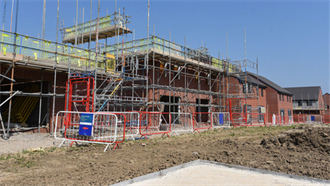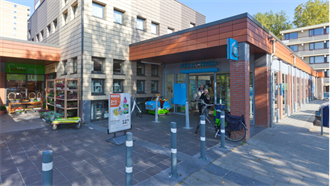A step-by-step approach is needed to help asset owners and managers on their journey to net zero, writes Hannah Pankiw, consultant at Verco.
A pervasive and holistic challenge faces the property sector: the transition to Net Zero (NZ) and futureproofing real asset portfolios. Social and economic responses to the climate emergency require a strategy to ensure future regulations are met and avoid potential ‘brown discounts’ or asset stranding*.
But where do you start?
Step 1: Desk-based risk profiling
A portfolio wide audit programme can be expensive, time-intensive, and may not ensure the best use of resources. Making a high-level ranking exercise is an important first step. This will allow focus on high importance and high-risk assets, highlighting where a more detailed site-level audit is required.
At Verco we run asset level data through our ‘Aim for Zero’ model and audit prioritisation tool to identify how portfolio and fund owners and managers can turn ambition and strategy into action at an asset level, avoiding risks and taking advantage of opportunities.
We look at four key risk factors:
- Data availability: poor data means less accuracy and limited insight into operational performance and associated potential for energy reduction.
- Operational performance: if consumption is significantly above a standard benchmark this would be deemed as an energy intensive asset, making targets significantly harder to reach and leaving the asset at risk of ‘stranding’.
- Potential CAPEX required to meet targets: a high CAPEX to Gross Asset Value ratio may mean investment is not viable and an alternative strategy should be considered.
- Requirements of intrusive deep retrofit measures (e.g. insulation or glazing replacements) before a lease break occurs may mean an asset cannot stay on track to meet targets.
Step 2: Consider the requirement for site-level net zero audits
Initial analysis supports prioritisation for assets within a fund or portfolio. The ‘Prioritisation Tool’ is based on the weighting and scoring of defined risk and opportunity factors, using asset information such as:
- Energy performance
- Lease information
- Hold status
- Occupier engagement
Analysis and a stakeholder workshop give a clear picture of which assets need detailed on-site reviews and when.
This tool also allows companies to set their own risk priorities, by defining the importance of individual factors. For example, a core real estate fund may place greater importance on occupier engagement, where a low score would identify an asset as high priority.
Step 3: Site-level audits of prioritised assets
Subsequent NZ audits include an onsite investigation to identify location specific opportunities for energy savings and carbon reductions.
Outcome: A portfolio wide asset-level implementation plan.
The outputs provide a portfolio wide asset-level implementation plan, with greater detail and insight built out from the most urgent and prioritised assets. The insight-led strategy ensures that interventions are feasible, necessary, will achieve targets and comply with regulations.
Case study example:
Working with a large pan-European real estate company in 2022, Verco undertook full baselining and future pathway modelling that included risk profiling all assets in the portfolio. Several assets were identified as high-risk for urgent action. Since this initial project Verco has worked with the client to undertake 13 audits and develop NZ carbon transition plans.
Based on Verco’s insights, interventions include an air source heat pump in one, while another is installing a reversible heat pump as a staged approach to transition.
This second asset, which didn’t follow the standard pathway, was identified as particularly high consuming compared to benchmarks. A follow-on audit showed chillers had become inefficient due to being at end of life, whilst the boilers were in perfect working order. Verco now works alongside a design team as a NZ “critical friend” to help refine the specification of a reversible heat pump system to replace the chillers, which can later be connected to the heating system when the boilers are closer to end-of-life.
Future transition
As increasing numbers of on-site audits are completed, the requirement for overall fund risk profiling may decrease in the short term, but the journey to net-zero is an ongoing process. In the future as data improves, funds may benefit from more detailed modelling, including:
- Age of heat pump/plant
- Updated assessments against unknown future frameworks and targets
- General reassessment of building performance as use changes occurs
- Incorporation of embodied carbon factors
Continual monitoring and evaluation of portfolios, fund strategies, new acquisitions and developments will need to take place to ensure an updated view of overall progress to meet 1.5oC aligned targets.
The systematic approach taken by Verco’s Real Asset specialists can provide the basis for an ongoing programme of works to achieve net zero while optimising long-term capital expenditure profiles and minimising risks.
Hear more on this topic in our free webinar: Risk profiling your real estate portfolio. Click here to find out more and register
* A stranded asset is defined as any asset that has suffered unanticipated or premature devaluation/write downs. This can also be expectation of future value loss.


































